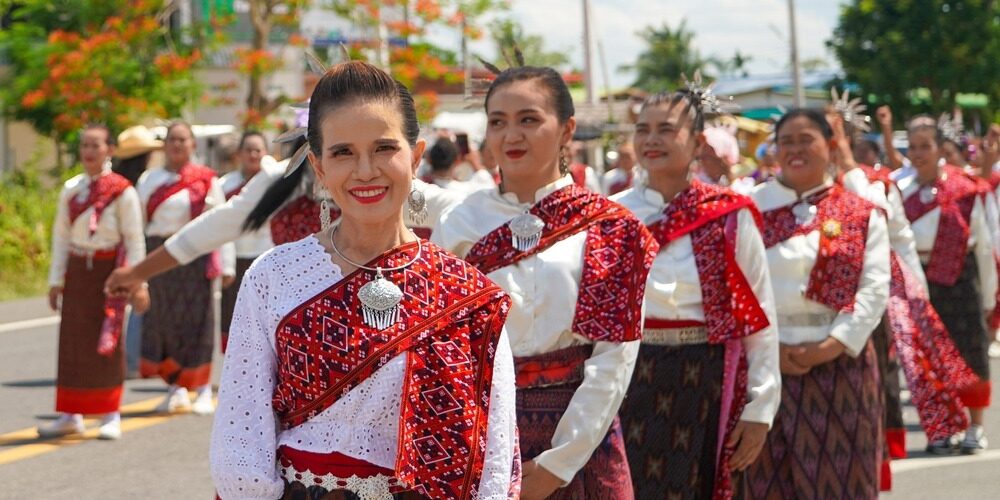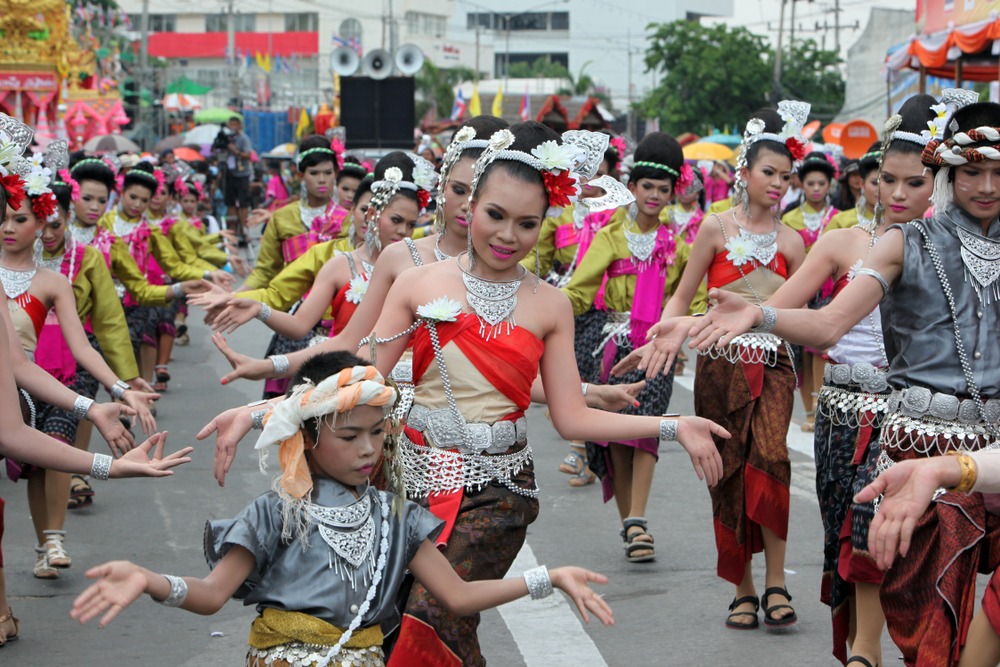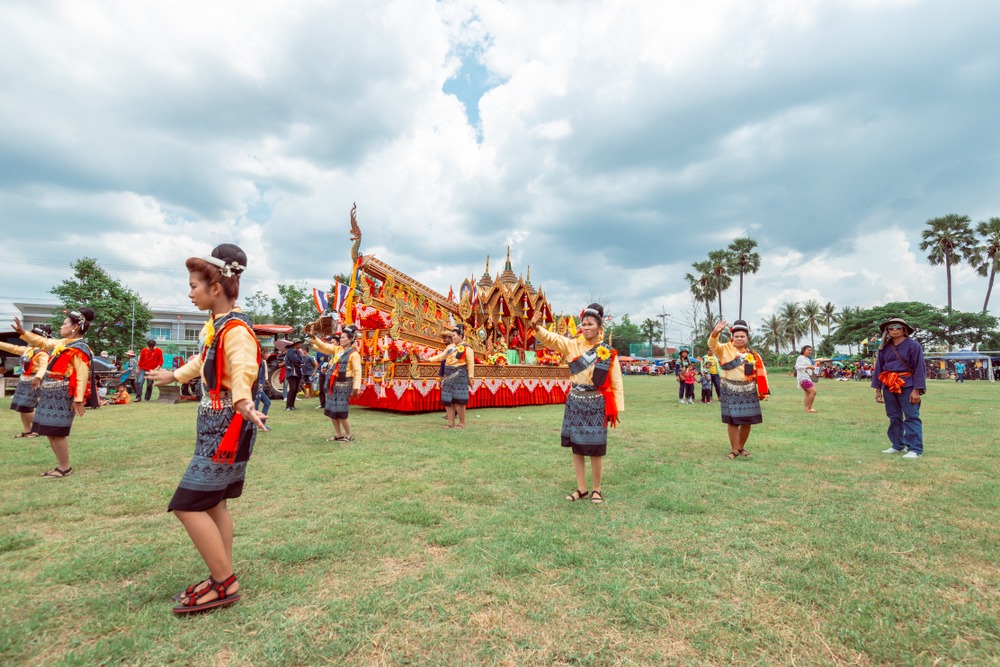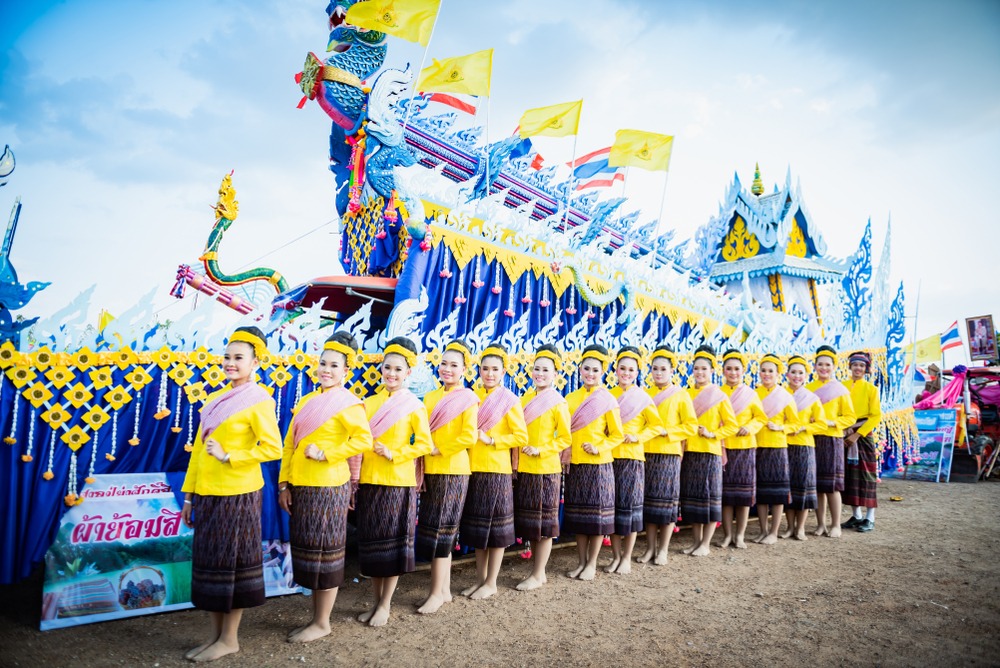Boun Bang Fai: The Rocket Festival of Laos and Its Fiery Celebration of Fertility and Renewal
Boun Bang Fai, or the Rocket Festival, is a dazzling and energetic celebration held in Laos that combines spirituality, community bonding, and vibrant cultural rituals. Traditionally held in May, at the start of the rainy season, Boun Bang Fai is a time when communities come together to launch homemade rockets into the sky to implore the gods for rainfall. Though the festival is unique to Southeast Asia, especially Laos and parts of Thailand, its emphasis on spectacle, community, and celebration shares a kinship with Mardi Gras. While Mardi Gras marks the end of winter and the arrival of Lent, Boun Bang Fai heralds the end of the dry season and seeks nature’s cooperation for agricultural abundance. This blog explores the traditions, mythological roots, and evolving customs of Boun Bang Fai.
The Origins and Mythology Behind Boun Bang Fai
The roots of Boun Bang Fai lie in ancient agricultural traditions, where communities relied heavily on rainfall to sustain their crops. To encourage rain and appease the gods, villagers crafted homemade rockets and launched them skyward as an offering. The myth of Phaya Thaen, the Lao god of rain, plays a central role in The Festival. According to the legend, a mythical serpent, or nāga, angered Phaya Thaen, resulting in a drought. In response, people sent rockets up to the heavens to communicate their need for rain. Impressed by the display, Phaya Thaen relented, blessing the land with rainfall. Over time, this ritual evolved into the full-fledged festival of Boun Bang Fai, combining spirituality with merrymaking.
The Festival is not only about rockets; it symbolizes renewal, fertility, and abundance. Just as the rain fertilizes the land, so too does the festival celebrate life’s generative powers, including themes of fertility and rebirth that parallel the arrival of spring in Western celebrations like Mardi Gras.
Traditional Elements of Boun Bang Fai
Though Boun Bang Fai revolves around the launching of rockets, the festival encompasses a variety of activities that honor Lao culture, folklore, and community spirit.
1. Rocket Building and Competitions
One of the most exciting elements of Boun Bang Fai is the construction of rockets, or bang fai. These rockets are handmade, ranging from smaller rockets crafted by families to massive rockets built by local experts. The process of rocket-making is a communal activity involving intricate craftsmanship, where builders carefully design rockets to ensure optimal launch. Bamboo poles, gunpowder, and metal casings are commonly used, with each team striving to build the most powerful and impressive rocket.
The climax of Boun Bang Fai comes with the rocket-launching competition. Teams from neighboring villages gather to showcase their creations, competing for the highest, longest-lasting, and most spectacular launches. The competition has a lighthearted element of rivalry, with teams often placing bets and making playful taunts, adding to the festival’s spirited nature. Rockets that fail to launch or perform poorly may result in the builder being playfully punished by the crowd, such as by being dunked in mud—a humorous acknowledgment of the divine’s disfavor.
2. Parades and Costumes
Boun Bang Fai celebrations begin with colorful parades that feature traditional Lao costumes, musical performances, and dancing. Community members dress in bright, elaborate outfits, some wearing traditional Lao silks and others donning humorous or satirical costumes. Many participants choose to cross-dress or wear exaggerated clothing, reflecting themes of fertility and reversal often seen in festivals like Mardi Gras. The parade includes musicians playing traditional Lao instruments, like the khaen (a bamboo mouth organ), creating a lively atmosphere that draws people of all ages into the festivities.
3. Rituals and Offerings
As a spiritual festival, Boun Bang Fai includes several rituals and offerings to appease Phaya Thaen. Before launching the rockets, participants hold ceremonies at local temples or designated communal spaces. Monks bless the rockets, and offerings such as flowers, incense, and food are laid out to honor the deities. This spiritual dimension reinforces the community’s desire for rain and agricultural success, grounding the festival in respect and gratitude for nature’s role in human survival.
4. Dancing and Music
Dance and music are integral to Boun Bang Fai, with traditional folk dances performed during the parades and communal gatherings. Dances often reflect agricultural themes, including the planting, nurturing, and harvesting of crops. The Lao lam vong dance is particularly popular, where participants move in a circular pattern, symbolizing unity and continuity. Traditional Lao music, featuring drums, flutes, and khaen, accompanies the dances, adding rhythmic energy to the celebration.
5. Festive Foods and Social Gatherings
Food plays a significant role in Boun Bang Fai, as families prepare feasts to share with friends, neighbors, and visitors. Traditional Lao dishes such as laap (a minced meat salad), khao niao (sticky rice), and tam mak hoong (green papaya salad) are popular choices, along with a variety of grilled meats and vegetables. Alcoholic beverages, particularly Lao rice whiskey, flow freely, enhancing the festival’s spirit of camaraderie. Social gatherings continue late into the night, allowing people to enjoy the sense of community and togetherness.
Boun Bang Fai’s Relation to Mardi Gras
While Boun Bang Fai and Mardi Gras emerge from distinct cultural contexts, the festivals share a few underlying similarities. Both celebrations serve as periods of indulgence and community bonding before a season of restraint, whether it be Lent in Christian contexts or the agricultural focus that follows the festival. Both festivals feature elaborate costumes, parades, music, and dance, with a focus on revelry that brings communities together. Additionally, both Boun Bang Fai and Mardi Gras reflect the theme of transformation, with Mardi Gras marking the shift from winter to spring and Boun Bang Fai symbolizing the transition from the dry season to the wet season. The themes of fertility and renewal are prominent in both celebrations, emphasizing the cyclical nature of life, agricultural abundance, and the importance of community rituals to ensure prosperity.
The Evolution of Boun Bang Fai Over the Ages
Boun Bang Fai has experienced significant changes throughout the ages, evolving from a purely spiritual ritual to a grand public celebration. As Lao communities modernized and expanded, so too did the scope of the festival. Some traditional practices, like using strictly natural materials for rockets, have evolved to incorporate modern materials and technologies, making the rockets more powerful and the displays more impressive. As the festival became more popular, Boun Bang Fai began attracting visitors from other regions and even from abroad. This exposure has helped keep the tradition alive while also introducing elements of modern entertainment, such as live performances, amusement rides, and food stalls that cater to tourists.
In recent decades, Boun Bang Fai has been embraced as a cultural heritage festival, recognized by the Lao government and promoted as a tourist attraction. Cities and larger towns now host organized versions of the festival, which include scheduled parades, professional rocket competitions, and cultural showcases. This has made Boun Bang Fai more accessible to people outside of rural areas, allowing urban dwellers and foreign tourists to experience the festival’s unique traditions. However, some critics feel that these changes risk commercializing the festival, diluting its traditional, spiritual essence in favor of attracting tourists. To counter this, efforts have been made to preserve the core values of Boun Bang Fai, emphasizing its cultural and agricultural significance. Community-led festivals in rural areas remain true to traditional practices, and there is a renewed interest in educating younger generations about the festival’s historical roots, ensuring that its legacy endures.
The Cultural Significance of Boun Bang Fai Today
Boun Bang Fai remains one of Laos’s most culturally significant festivals, embodying themes of fertility, unity, and reverence for nature. As a celebration that connects the community to its agricultural heritage, Boun Bang Fai plays a crucial role in fostering a collective identity rooted in Lao values and traditions. The festival’s adaptability over the centuries highlights the resilience of Lao culture, allowing it to retain its core essence while embracing elements of modernity. Beyond its traditional rituals, Boun Bang Fai offers an opportunity for communities to come together, bridging gaps between generations and reaffirming their shared hopes for prosperity. Whether celebrated in rural villages or larger towns, the sight of rockets soaring into the sky remains a powerful symbol of hope, unity, and humanity’s enduring relationship with the forces of nature.












































